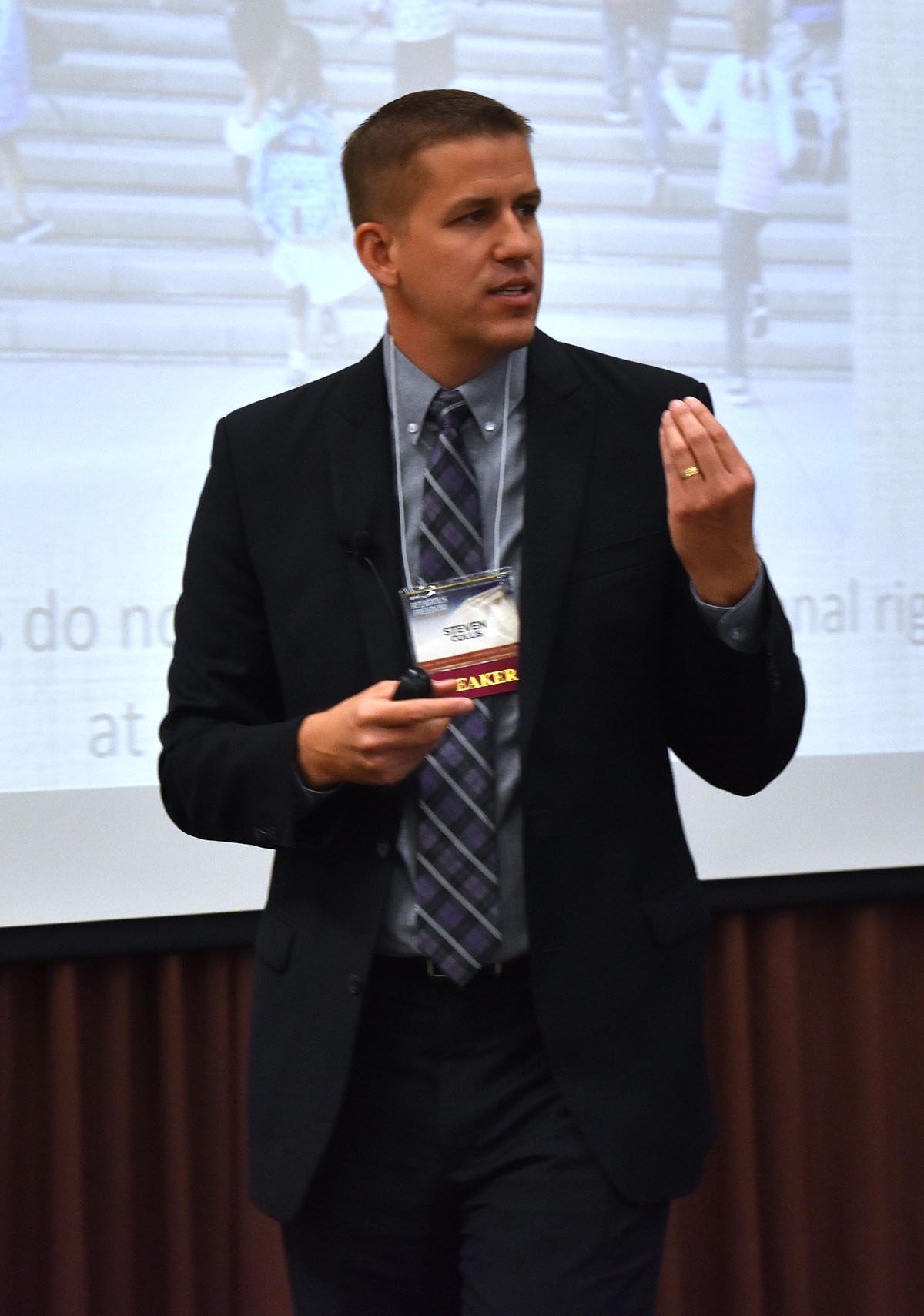Workshop: Religion in Public Schools: What Rights do Parents and Students Have? – Steven Collis

by Scott Mosley, 2017 ICLRS Student Fellow, with contributions by Neal Liu, 2017 ICLRS Student Fellow
Steven T. Collis, a chair of Holland & Hart LLP’s nationwide religious institutions and First Amendment practice group, spoke Thursday afternoon on the religious rights of parents and students in public schools. He made clear that there are many gray areas regarding religious freedom in public schools the courts are currently trying to navigate. To ensure these rights are properly respected by public schools, parents and children must know their rights, advocate for their rights, and teach these rights to their communities, school administrations, teachers, and students. Mr. Collis presented some broad principles that can be applied in a variety of settings to show how parents and students can advocate for their rights.
First: Religious freedom is a gift to the world and it matters. Everyone has a religion, even those who claim they are not religious. Why? Because everyone has answers to religious questions, even if they are agnostic. And while some may think religion is a cause of war, experience and reality show that in actuality, the lack of religious freedom is a cause of war. Religious freedom has helped to eradicate war.
Second: Public schools were originally run by churches. State funded schools were largely Protestant. When large populations of Catholics migrated to the U.S. public schools were viewed as bastions to protect Protestant children from Catholic teachings.
Third: The first amendment contains the establishment and free exercise clause. Both clauses are essential – without one or the other religious freedom crumbles. Under the free exercise clause public schools should not burden a student’s religious exercise except in rare circumstances, and only if the school has a compelling interest and picks a narrow way to implement this burden. Under the no establishment clause public schools should not promote or favor one religion or non-religion over the other.
Fourth: Student’s do not shed their constitutional rights when they walk into a school. Both parents and students have constitutionally protected rights.
Mr. Collis provided several examples of the application of these principles, such as a student’s right to share his or her religious belief at school (save for student on student coercion), to wear religious garb, to gather together to pray, and to opt out of most lessons free from penalty.
When parents and students know these principles, and are willing to teach their school administrations, teachers, and students by advocating for their rights, many potential conflicts can be resolved without the need for litigation.